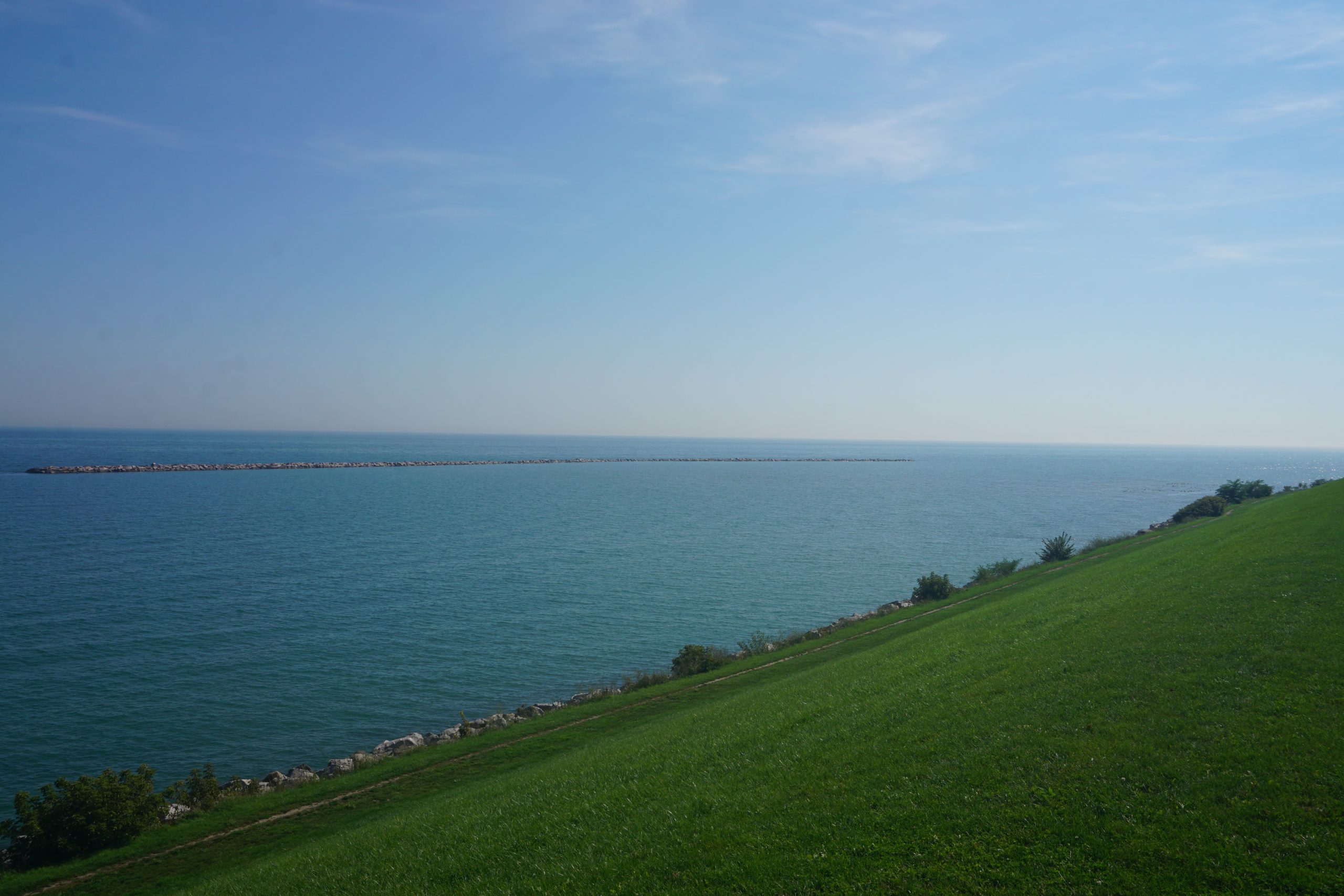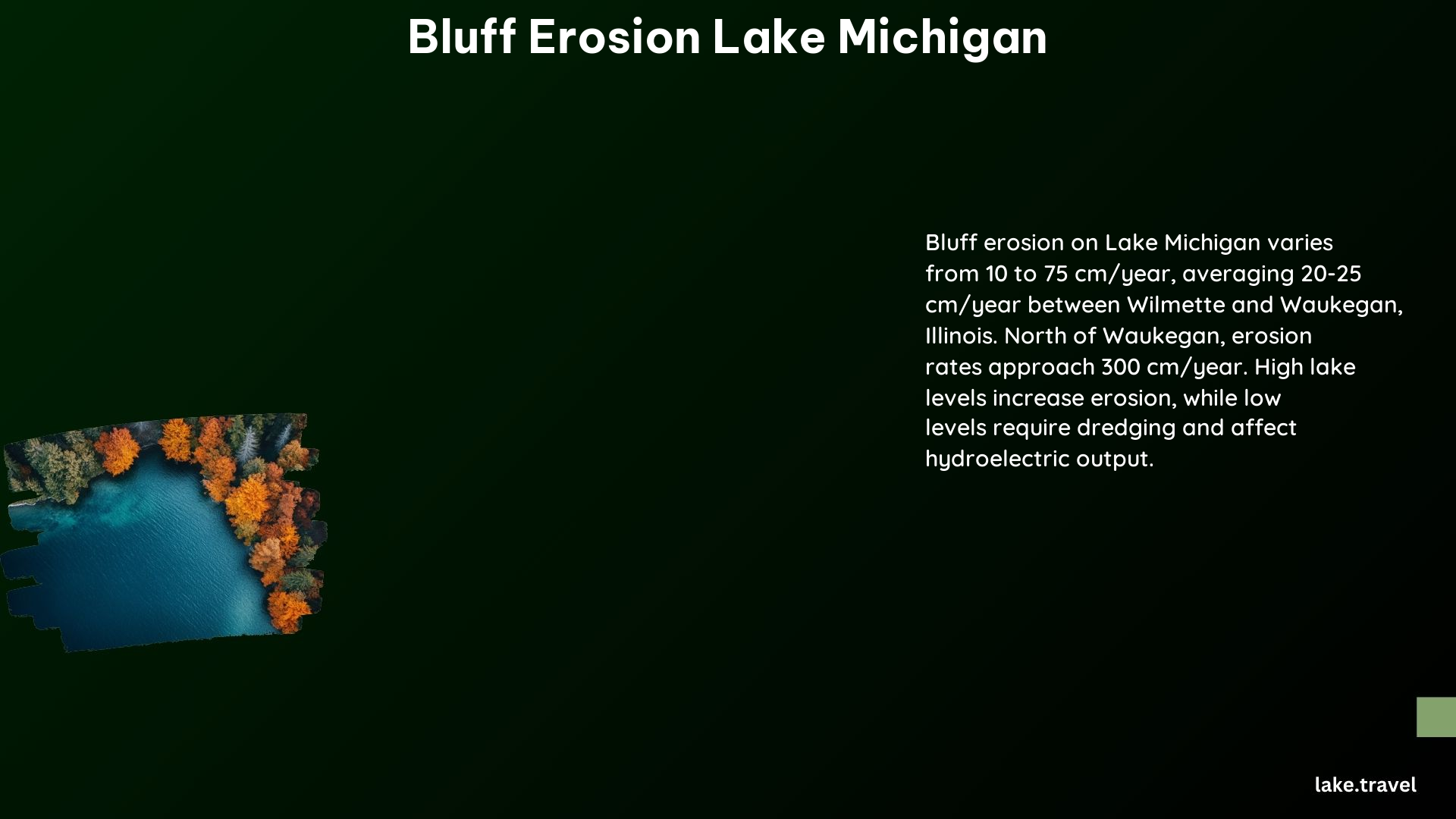Bluff erosion along the shores of Lake Michigan is a significant concern for homeowners and local authorities. This dynamic process is driven by a complex interplay of natural and human-induced factors, posing challenges for coastal communities. In this blog post, we’ll explore the primary causes of bluff erosion, measures homeowners can take to protect their properties, and the regulatory frameworks in place to mitigate this issue.
Primary Causes of Bluff Erosion on Lake Michigan Shores

- High Lake Levels: The fluctuating water levels in Lake Michigan can lead to erosion at the base of the bluff, causing instabilities and landslides on the bluff face.
- Wave Attack: Powerful wave action during high lake levels and storms can directly erode the bluff face, exacerbating the problem.
- Soil Type and Composition: The type and composition of the soil, including stratification and moisture levels, can significantly affect the stability of the bluff.
- Land Use and Land Cover: Human activities such as construction and development can alter the natural landscape, increasing the risk of bluff erosion.
- Long Shore Current and Sediment Budget: Changes in the sediment supply and transport along the shoreline can contribute to bluff erosion.
Homeowner Measures to Protect Properties from Bluff Erosion on Lake Michigan

- Nature-Based Shoreline Options: Implementing natural solutions like beach nourishment, dune restoration, and native vegetation can help stabilize the bluff and mitigate erosion.
- Structural Solutions: Installing seawalls, revetments, and other engineered structures can provide protection for properties, but these measures can also have negative environmental impacts.
- Regular Monitoring: Regularly inspecting the bluff for signs of erosion and instability can help homeowners take proactive measures to address the issue.
- Collaboration with Local Authorities: Working closely with local government agencies and experts can provide homeowners with access to resources and guidance on mitigating bluff erosion.
Regulatory Measures to Mitigate Bluff Erosion on Lake Michigan
- Coastal Resilience Self-Assessment: Local governments and agencies conduct assessments to identify high-risk erosion areas and develop strategies for mitigation.
- Shoreline Protection Regulations: Regulatory measures are in place to ensure that development and construction projects do not exacerbate bluff erosion.
- Research and Monitoring: Organizations such as the U.S. Geological Survey (USGS) and the University of Wisconsin conduct studies to better understand bluff erosion and develop predictive models.
- Collaborative Efforts: Local, state, and federal agencies work together to share knowledge, resources, and best practices in addressing bluff erosion along the Lake Michigan shoreline.
Additional Resources
- Ozaukee County’s Lake Michigan Bluff Erosion Page
- USGS Fact Sheet on Coastal Erosion of Southern Lake Michigan
- ArcGIS StoryMap on Bluff Erosion on Lake Michigan Shores
References
- Ozaukee County’s Lake Michigan Bluff Erosion Page
- USGS Fact Sheet on Coastal Erosion of Southern Lake Michigan
- ArcGIS StoryMap on Bluff Erosion on Lake Michigan Shores
- Michigan Department of Environment, Great Lakes, and Energy – High Risk Erosion Areas
- USGS Geonarrative on Bluff Erosion on Lake Michigan
